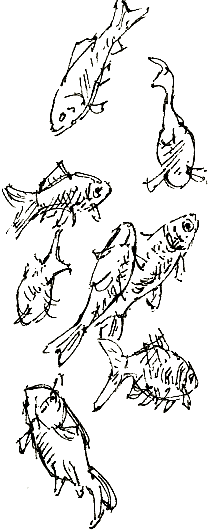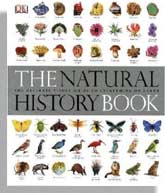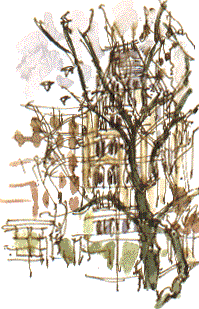 Goldfish
Goldfish Goldfish
GoldfishWild West Yorkshire, Tuesday 7 December 2010
previous | this month | next
I FIND when drawing these constantly moving goldfish in their tall tank at the dentist's that it helps to know the names of the fins:
The twin fins on the chest area are the pectorals - that makes sense as 'pecs' are the chest muscles that bodybuilders are so keen on
The pair behind are the pelvic fins, followed by a single anal fin.
The dorsal fin, of course, runs along its back.
One fin that the goldfish doesn't possess is a stumpy, rayless fin; the adipose, used, as its name suggests, by certain species to store fat. The red piranha has a small adipose fin on its back, close to the tail.
Perhaps, as they're noted for their razor-sharp teeth, there should be piranhas in the aquarium in the dentists, rather than goldfish.
 I've been reading about fish recently: fish, fossils, fungi . . .
I've been reading about fish recently: fish, fossils, fungi . . .
Reading natural history books over the past few months has given me a welcome escape into the world of nature at a time when we've been worrying about Barbara's mum's illness and it's impossible for us to get away and experience that alternative world for ourselves (and the weather has been against us too over the last week or two).
So I was drawn to The Natural History Book, which the publishers Dorling Kindersley describe, without a hint of modesty but with some justification, as The Ultimate Visual Guide to Everything on Earth. It sticks to a simple theme; to review every branch of the tree of life and, briefly, the minerals, rocks and fossils that provide a setting for the millions of plant and animal species with which we share the planet. The book features 5,000 representative species.
 Its publication coincides with the centenary of the Smithsonian's National Museum of Natural History, which I've yet to visit (my mental image of it derives from Night at the Museum: Battle for the Smithsonian) but I know I'd be faced with the same dilemma that I have on my visits to the Natural History Museum in London (left);
Its publication coincides with the centenary of the Smithsonian's National Museum of Natural History, which I've yet to visit (my mental image of it derives from Night at the Museum: Battle for the Smithsonian) but I know I'd be faced with the same dilemma that I have on my visits to the Natural History Museum in London (left);
Do I wander about, taking in as many of the exhibits as I can in the limited time available, or do I concentrate on one section and read every label?
This book is presented methodically, along the lines of a museum exhibit, but, as I've got my own copy here at home on our coffee table, I can pick it up whenever I like and read the labels at leisure.
I'm a natural history illustrator by training but I have to say that I don't think the book would be improved if the editors had commissioned illustrations of each species. An illustrated version would have had its own strong points but, for a review of species, the photographs work well. The few commissioned illustrations that occasionally appear don't break the flow of the photographs. What's missing, quite rightly, are the sort of diagrams you'd normally find in a natural history book - the life cycle of the butterfly or the food pyramid in a woodland habitat, for example - which allows the species themselves to take centre stage. I can't imagine a more impressive way to demonstrate biodiversity.
What comes over in this weighty, large format volume is the astonishing diversity of the natural world, so what most of us still accept, despite so much evidence to the contrary, as the factual, unbiased medium of photography, seems more appropriate here than the work of an illustrator who might - through pen and brushstrokes - have expressed an individual point of view.
I realise that photographs inevitably have a point of view too in their selection, lighting and the way they are placed on the page, but it's a point of view most people are familiar and comfortable with.
In its scope and design, the book pays homage to the tradition of the great illustrated natural history books, such as Audubon's, four volume Birds of North America which sold in auction this week for a record £7.3 million.
Richard Bell, illustrator
previous | this month | Wild West Yorkshire home page | next